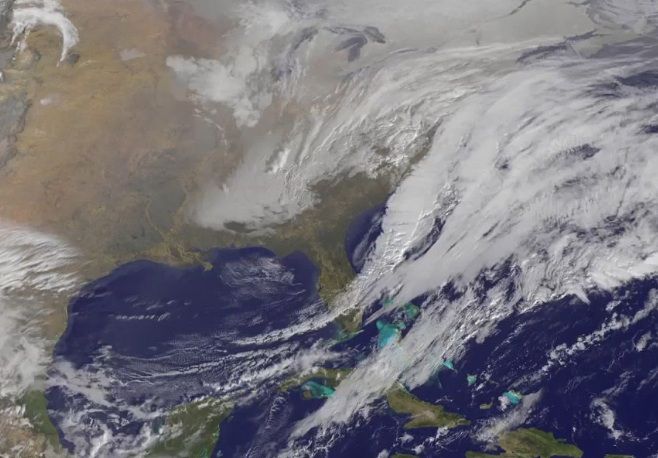
Editor's Note: This story was updated at 4:45 p.m. E.T:
East Coast folks: Stock up on munchies, get those prescriptions filled and get ready to hunker down for the next day or two.
A huge nor'easter, dubbed Juno, is expected to batter the East Coast starting tonight (Jan. 26). The corridor from New York to Boston is expected to get between 1- 2 feet (0.3 to 0.6 meters) of snow, with some areas potentially receiving up to 3 feet (0.9 meters) of snow. In addition, winds will gust up to 60 to 70 miles per hour (96 to 113 km/h) in some places along the coast, making this a dangerous blizzard, said Patrick Burke, a meteorologist with the National Weather Service's Weather Prediction Center.
The monster snowstorm is occurring because of a perfect confluence of factors, including a low-pressure system that is traveling just the right path along the coast, Burke said. [The 10 Worst Blizzards in U.S. History]
Nor'easters
The Northeast gets some of the largest winter storms in the world, which occur when the frigid air blowing across the North American continent collides with the balmier breezes over the Atlantic Ocean. In particular, a process called bombogenesis, where air pressure drops by about 24 milibars or more in a 24-hour period, can produce intense storms, or "bombs," like Juno.
"Where the two meet you can get this explosive development of low pressure, which must mean that the low pressure is deepening very rapidly," Burke told Live Science.
Sign up for the Live Science daily newsletter now
Get the world’s most fascinating discoveries delivered straight to your inbox.
That, in turn, allows the air low in the atmosphere to rise. As rising air cools, moisture condenses out as either rain or snow, Burke said. The low-pressure systems in the region also tend to create strong northeasterly winds — hence the name nor'easter, Burke said.
Perfect storm
In the case of Juno, which is expected to hit this afternoon and continue until tomorrow afternoon (Jan. 27), conditions are perfect for a heavy snowfall and blustery winds.
At this time of year, the air over the continent is already quite cold, creating a large contrast with the warmer coastal air and providing a quickly developing low-pressure system. These conditions also ensure that all the precipitation will land in the form of snow, rather than the wintry mix of rain and snow that is more typical for the region, Burke said.
In addition, this snowstorm is likely to follow just the right trajectory at just the right time to create lots and lots of snow, with the coastal-low pressure front expected to develop a little more inland than is typical, Burke said.
Staying safe
This storm is a blizzard, or a snowstorm where wind gusts frequently reach 35 miles per hour (56 km/h) and visibility is reduced to less than 0.25 miles (0.4 km).
"A heavy snowfall can actually be kind of a pretty thing to watch but when you include all this strong wind, then it becomes very dangerous and life threatening," Burke said. "Your visibility is reduced to near-zero."
People caught in those conditions can quickly lose their way, become disoriented and freeze to death, Burke said.
People in affected areas should make sure to stock up on provisions, fill their prescriptions, and be prepared to sit tight in their houses for the next day or two, Burke said. Then, once the snow settles, they can enjoy the winter wonderland.
One way to reduce the hassle after the storm is to clear the driveway of obstacles (such as cars) that will create giant snowdrifts. People can also reduce their after-blizzard work by letting wind carry snow into a neighbor's yard before taking out the shovel, Ryan Maue, a meteorologist at Florida State University, said via Twitter.
Editor's Note: This story was updated to add information about bombogenesis, the process by which intense storms such as Juno may form.
Follow Tia Ghose on Twitter and Google+. Follow LiveScience @livescience, Facebook & Google+. Originally published on Live Science.

Tia is the managing editor and was previously a senior writer for Live Science. Her work has appeared in Scientific American, Wired.com and other outlets. She holds a master's degree in bioengineering from the University of Washington, a graduate certificate in science writing from UC Santa Cruz and a bachelor's degree in mechanical engineering from the University of Texas at Austin. Tia was part of a team at the Milwaukee Journal Sentinel that published the Empty Cradles series on preterm births, which won multiple awards, including the 2012 Casey Medal for Meritorious Journalism.











